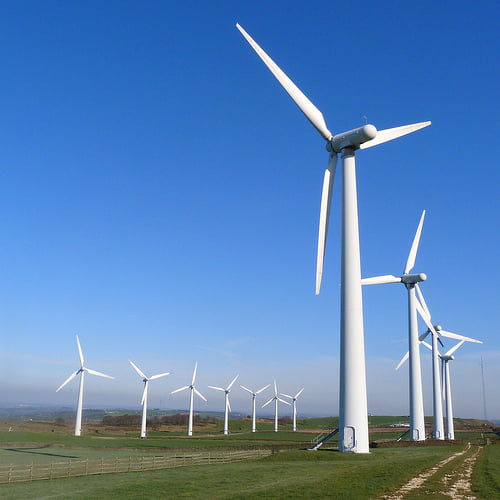

Environment
Wind farms cause row in Wiltshire
Conservative councillors in Wiltshire have essentially canned the county’s hopes for wind power development in the near future, after voting in favour of restrictions to limit the available locations for turbines.
The changes to policy prohibit turbines over 25m high from being built within 1km of any residential building. This restriction is upped to 1.5km for 50m turbines, 2km for 100m ones and finally, 3km for turbines of 150m or over.
The reason for this, according to the Wiltshire Gazette and Herald, is to “ensure the safety of residents in the rare chance that one of the blades was to break away”.
The implementation of these over-cautious measures would practically end the wind industry’s presence in the county, in a similar fashion to Lincolnshire county council’s attack on the sector last month.
But Adam Bell, communications manager at RenewableUK, the trade and professional body for the wind industry, said there was no evidence to support Wiltshire’s safety fears.
“While we understand the councillors’ concerns, the industry has an excellent health and safety record, and no member of the public has ever been harmed by a wind turbine in the UK.
“The best way of managing this kind of risk is to assess each wind farm on a case by case basis, rather than imposing blanket rules.”
And there are facts to support Bell’s claims. The Citizens of Amherst Island for Renewable Energy (CAIRE), a Canadian pro-wind group, referenced National Safety Council figures in a piece that listed the most popular wind power myths.
“The odds of anyone being killed in a wind turbine related accident in the US over his/her lifetime was 1 in 3,777,272”, it wrote.
“This compares to a 1 in 84 risk of dying in a motor vehicle accident, a 1 in 1,134 risk of drowning, and a 1 in 56,789 risk of dying from a hornet, wasp or bee sting.”
Meanwhile, in his 2004 book, Wind Power: Renewable Energy for Home, Farm, and Business, Paul Gipe relayed the fact that since the industry’s rebirth in the 1970s, “wind energy has directly or indirectly killed 20 people worldwide”.
As the infographic below shows, wind ranks extremely well against other power forms in terms of deaths per terawatt hours of electricity, making it one of the safest forms of energy available.

Comparing deaths per terawatt hours (TWh) produced: Ben Willers.
Good Energy, the UK’s only 100% renewable electricity supplier, is based in Wiltshire. Its CEO and founder, Juliet Davenport, said, “Without any proper public consultation, Wiltshire Council has adopted a policy which will make it all but impossible to build new sources of wind energy in the county, no matter how worthwhile.
“There is already an established, independent process which deals with wind-farm applications on a case-by-case basis, but this move completely shortcuts that.”
It’s essential that we capitalise on the fact that the UK has one of the most plentiful wind resources in Europe, and not on trivial aesthetic-driven discussions. Whilst other renewable energy forms – solar, wave and hydro, for example – are equally safe, wind leads the way in terms of contribution to the electricity mix, so it’s vital that it’s taken seriously.
For more debunked renewable energy myths, have a look at our Guide to Limitless Clean Energy, in which Mark Barrett of University College London’s Energy Institute deflates some of the most popular concerns.
Further reading:
Wind farm storm in Lincolnshire as county council says, “Enough is enough”
Papua New Guinea is the latest in a long line of fossil fuel disasters


 Environment9 months ago
Environment9 months agoAre Polymer Banknotes: an Eco-Friendly Trend or a Groundswell?

 Environment11 months ago
Environment11 months agoEco-Friendly Home Improvements: Top 7 Upgrades for 2025

 Features8 months ago
Features8 months agoEco-Friendly Cryptocurrencies: Sustainable Investment Choices

 Features9 months ago
Features9 months agoEco-Friendly Crypto Traders Must Find the Right Exchange




























